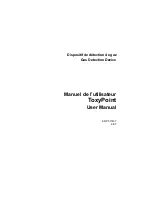
12
SEARCHING
Wide Scan Inductive Search
This mode of operation is the preferred method for
searching a large area quickly. Two operators are
required and the handle assembly is not used.
The Wide Scan Inductive Search mode is practical
only when searching for ore veins, pipes or cable
40 feet long or more. If the operators are too close
together, “direct air coupling” will result, meaning
the receiver is detecting the Transmitter signal
directly through the air instead of through a buried
conductor.
Set Up
Two operators line up at least 20 feet apart, one with
the receiver and one with the transmitter, parallel to
the assumed direction of the buried conductor. The
transmitter and receiver should be in line with each
other, facing the same direction.
1
. Set the transmitter:
Power: ON
2
. Set the receiver:
Power: ON
Sensitivity: ZERO
Figure 7.
Wide Scan
Inductive Search
Tuning
13
SEARCHING
3
. Slowly increase the SENSITIVITY control until the audio
signal is heard, then reduce SENSITIVITY until the audio
just disappears. This is the point at which “air coupling”
has been eliminated.
Operating
1
. Keeping the receiver and transmitter sections in line,
the two operators can now walk their predetermined
search pattern. The SENSITIVITY control should be
checked periodically to ensure that the receiver is
tuned just below the “air coupling” threshold.
2.
If both operators cross the same conductive body
(pipe, cable, ore vein, etc.) at approximately the
same time, the receiver tone and meter will rise to
indicate its presence. The receiver operator should
alert the transmitter operator that they have detected
a conductive object.
3.
The receiver operator should then hold his position
while the transmitter operator moves back and forth
for the strongest receiver response. At this point,
the transmitter operator should stop and place the
instrument on the ground with the handle grip on
top.
4.
The receiver operator can then pinpoint the buried
object by moving the receiver back and forth in line
with the transmitter. The object should be directly
beneath the point of maximum response.
5
. The receiver operator may then trace the signal along
the length of the unseen object as described in the
Inductive Trace section (page 12).










































